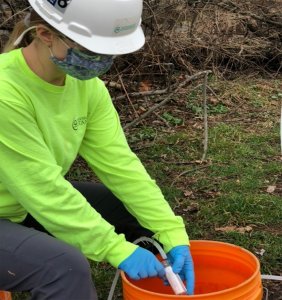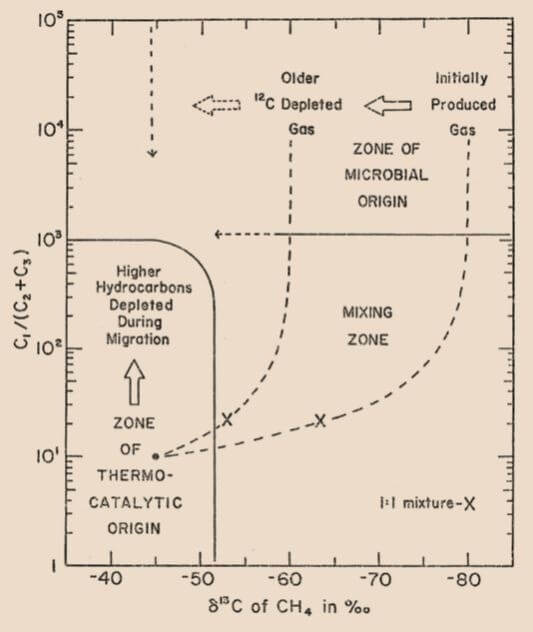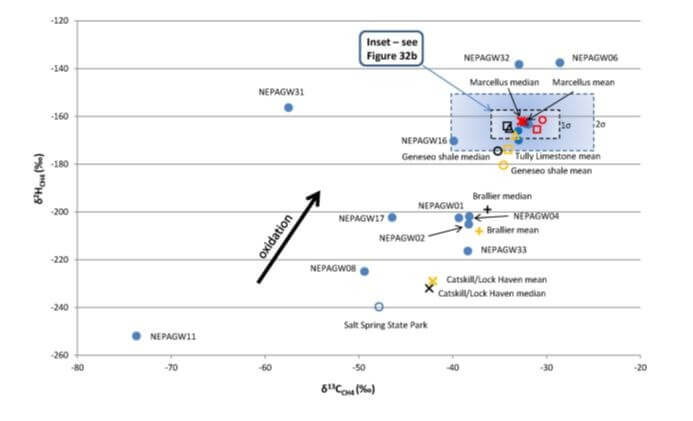
Stray Gas Forensics
Stray gas is a common term for natural gas that may be naturally released from geologic, or oil and gas industry-related sources. Natural gas is composed mostly of methane, ethane, and propane; however, methane is usually the most typical and abundant constituent.
Forensic studies are used to determine whether stray gas in groundwater is related to shallow or deeper geologic sources. Gas dissolved in groundwater used in the forensic studies is often analyzed for mass concentrations of the hydrocarbon components (e.g., in mg/L) and the molar concentrations (mole percentage). The analytical method used to determine the mass concentrations is usually some variation of the US EPA SOP RSK 175, and the methods used for determining mole percentages are those published by the Gas Processors Association (GPA).
If a methane concentration in groundwater exceeds a regulatory notification limit set by an agency, the need emerges to further investigate source and transport mechanisms. Source identification can often be achieved by using stable isotopic analysis for carbon-13 and deuterium in methane. In this case, stable isotopic compositions in both gas from drilling mud and production zones and from groundwater or surface water are evaluated. Because stable isotopic ratios are consistent between gaseous methane and dissolved methane in groundwater, the origin of the methane can be traced back to the source rock.
From a forensic standpoint, stable isotopic ratios in natural gas sources can be thermogenic (petrogenic), biogenic, or a mixture of both. Thermogenic-sourced natural gas is produced by “cracking” of longer-chained hydrocarbons in high temperature and pressure conditions in the subsurface. Natural gas is typically composed of the light hydrocarbons, methane, ethane and propane. Therefore, the geology of the rock results in a natural gas retaining unique isotopic ratios that inform geologic origin and potential changes from transport oxidation. Separately, biogenic methane is derived from microbial decomposition of organic matter in shallow marine sediments or in sediments formed from lakes, streams, marshes, swamps, or presently from landfills. Ethane or propane are not associated with biogenic methane. The microbes typically oxidize methane into carbon dioxide and water resulting in recognizable fractionation ratios of the stable isotopes. Generally, the two sources of methane will produce end members with stable isotopic compositions and relative concentrations of methane to ethane ratios. The differentiation of biogenic methane from thermogenic methane, ethane and propane will support explaining identified stray gas and assist with appropriate actions to evaluate pathway migration, rate of attenuation, and/or potential source remediation.
Forensic chemists direct stable isotopic analysis using an isotope ratio high-resolution gas chromatograph (GC) mass spectrometer (IR HRGC/MS), and because a GC is used, the isotope ratios are compound specific. The compositions are reported as shifts in ratios per mil or parts per thousand, relative to an internationally accepted standard (usually Pee Dee Belemnite).
The forensic data are analyzed using statistical and bivariate-plot techniques. The ratios are calculated and expressed as δ13C values. The most common bivariate plots are those of Schoell1 and Bernard2. Examples of the Schoell and Bernard plots are shown in figures 1 and 2.
The chemical mixtures, stable isotopic ratios, and groundwater chemistry are ultimately used for supporting multiple lines of evidence that establish the types, sources, and mixtures of gases present. Environmental Standards has significant experience in screening stray gas occurrence, collecting defensible samples, and establishing the source(s) for natural gas. If you have questions, please contact us.


References:
- Coleman, et al., Isotopic Identification of Landfill Methane, Environmental Geosciences, Volume 2, Number 2, 1995, 95-103.
- Bernard, B., Models of Natural Gas Origin – A Short Story, http://www.searchanddiscovery.com/documents/2019/42454bernard/ndx_bernard.pdf, accessed 03/15/2021.
- https://www.epa.gov/sites/production/files/2015-06/documents/nepa_report_508_km.pdf



